

























Print on Hahnemüle Photo Rag baryta paper; 60 x 40 cm
Edition of 5 + 1 AP
Print on Hahnemüle Photo Rag baryta paper; 60 x 40 cm
Edition of 5 + 1 AP
Exhibition view © Tadzio
[+]Exhibition view © Tadzio
[-]Exhibition view © Tadzio
[+]Exhibition view © Tadzio
[-]Exhibition view © Tadzio
[+]Exhibition view © Tadzio
[-]Exhibition view © Tadzio
[+]Exhibition view © Tadzio
[-]Exhibition view © Tadzio
[+]Exhibition view © Tadzio
[-]Exhibition view © Tadzio
[+]Exhibition view © Tadzio
[-]Exhibition view © Tadzio
[+]Exhibition view © Tadzio
[-]Exhibition view © Tadzio
[+]Exhibition view © Tadzio
[-]Exhibition view © Tadzio
[+]Exhibition view © Tadzio
[-]Exhibition view © Tadzio
[+]Exhibition view © Tadzio
[-]Exhibition view © Tadzio
[+]Exhibition view © Tadzio
[-]Exhibition view © Tadzio
[+]Exhibition view © Tadzio
[-]Exhibition view © Tadzio
[+]Exhibition view © Tadzio
[-]Exhibition view © Tadzio
[+]Exhibition view © Tadzio
[-]Exhibition view © Tadzio
[+]Exhibition view © Tadzio
[-]Exhibition view © Tadzio
[+]Exhibition view © Tadzio
[-]Exhibition view © Tadzio
[+]Exhibition view © Tadzio
[-]Exhibition view © Tadzio
[+]Exhibition view © Tadzio
[-]Exhibition view © Tadzio
[+]Exhibition view © Tadzio
[-]Exhibition view © Tadzio
[+]Exhibition view © Tadzio
[-]Exhibition view © Tadzio
[+]Exhibition view © Tadzio
[-]Exhibition view © Tadzio
[+]Exhibition view © Tadzio
[-]Exhibition view © Tadzio
[+]Exhibition view © Tadzio
[-]Exhibition view © Tadzio
[+]Exhibition view © Tadzio
[-]Exhibition view © Tadzio
[+]Exhibition view © Tadzio
[-]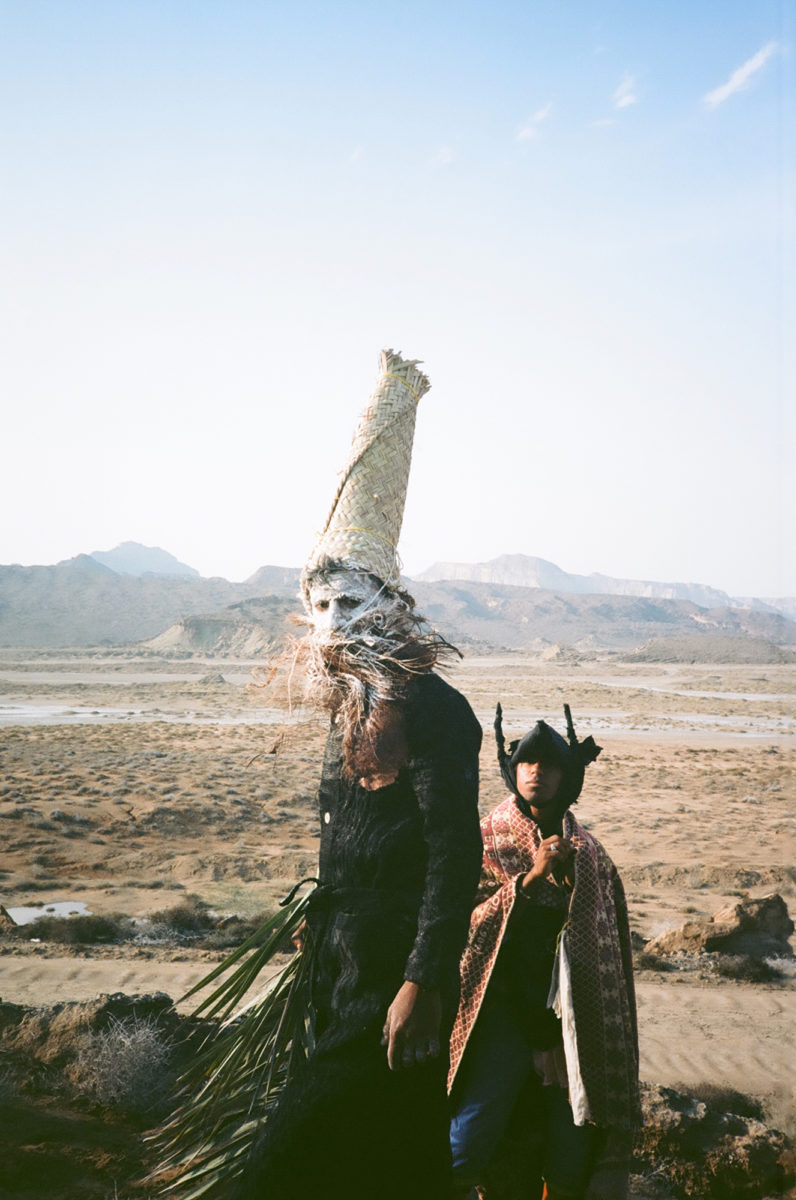
Print on Hahnemüle Photo Rag baryta paper; 60 x 40 cm
Edition of 5 + 1 AP
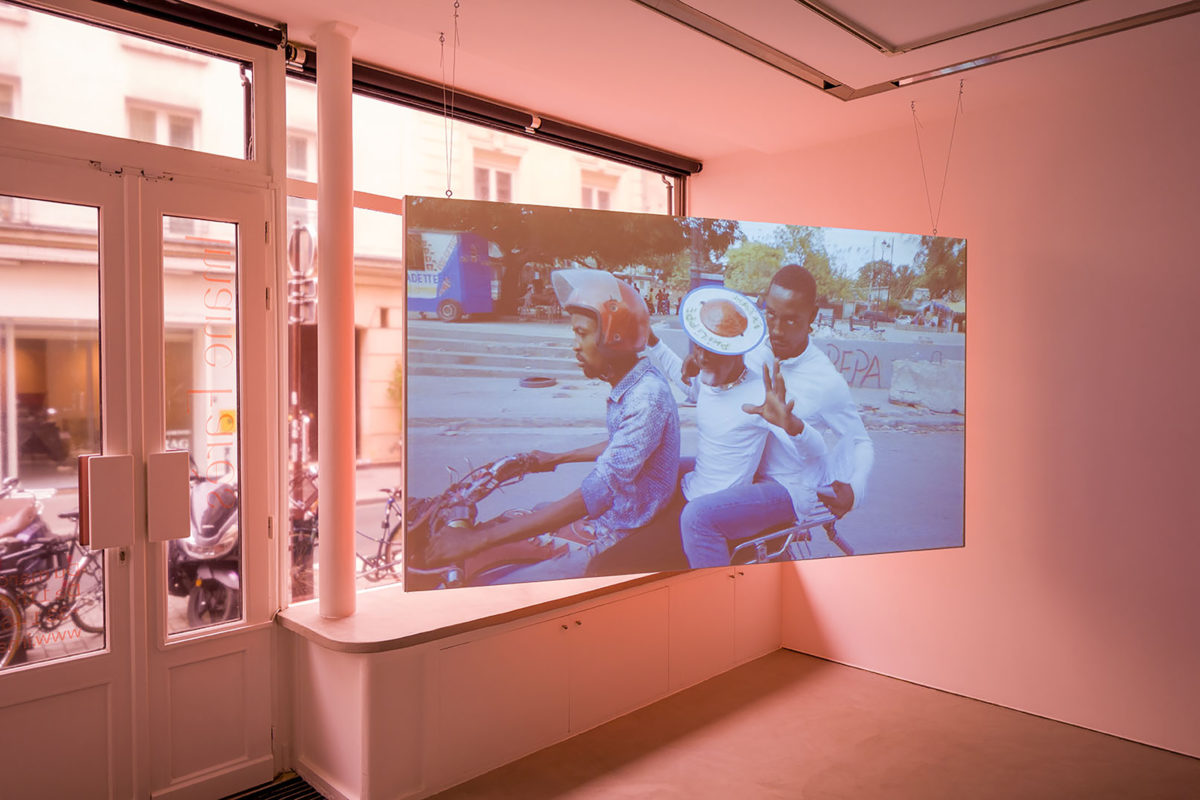
Exhibition view © Tadzio
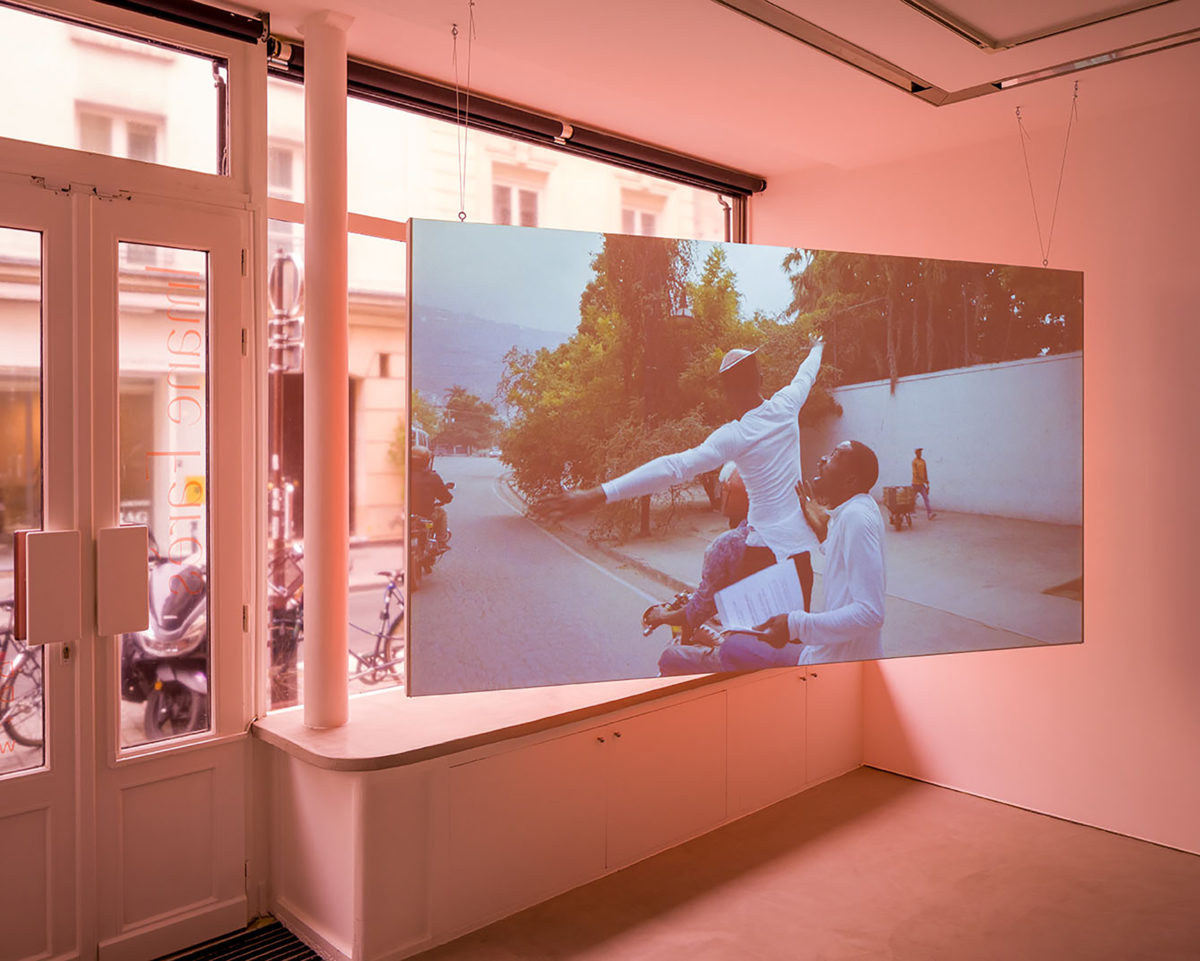
Exhibition view © Tadzio
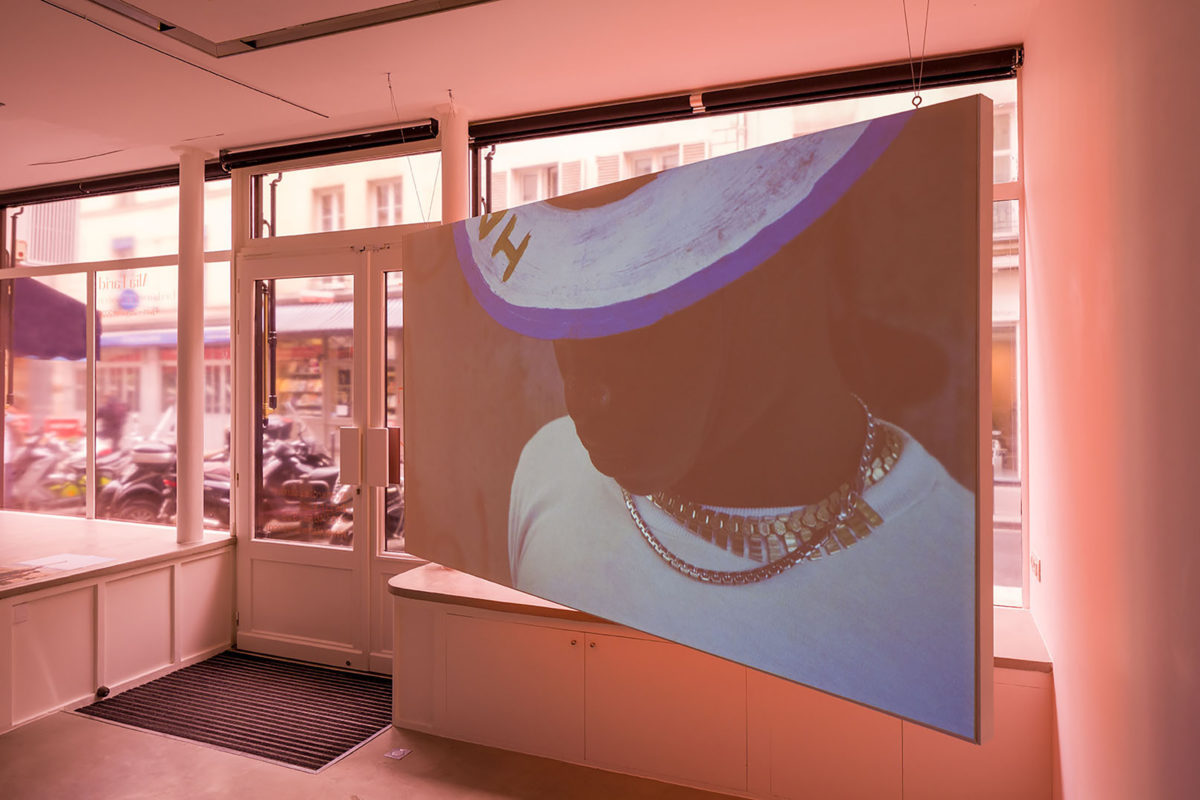
Exhibition view © Tadzio
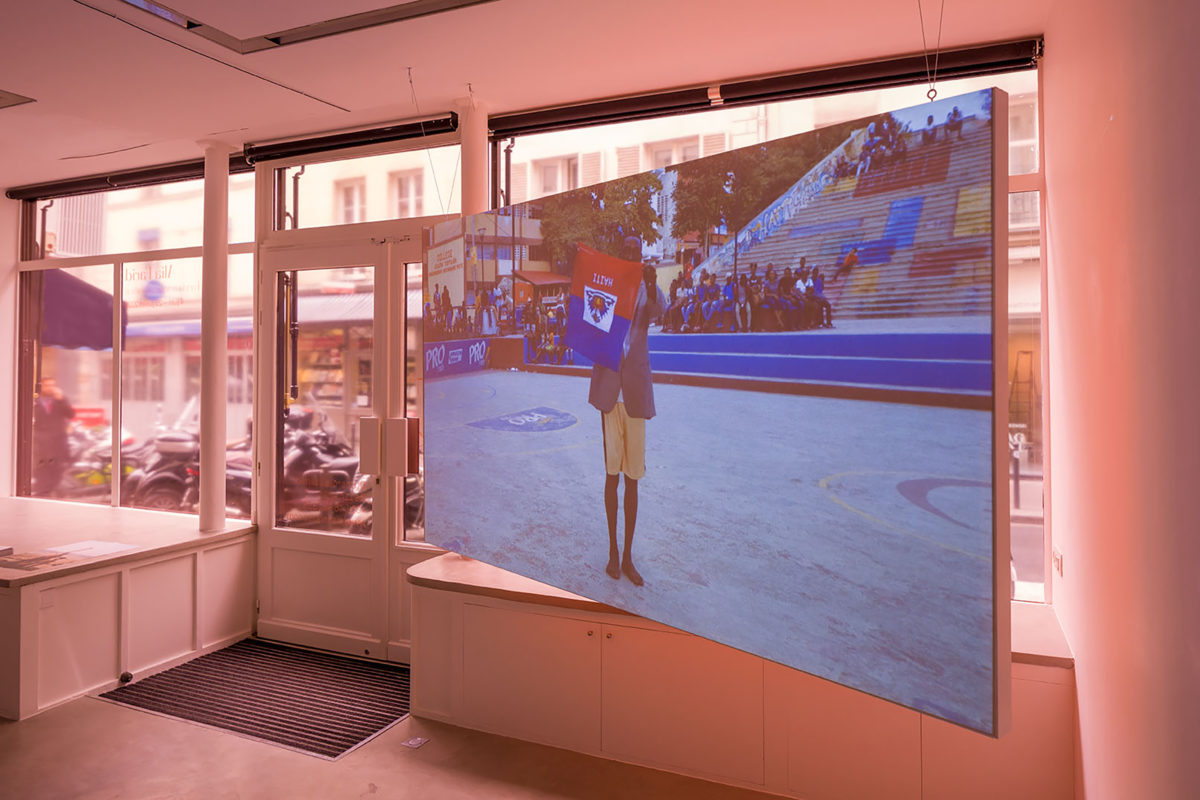
Exhibition view © Tadzio
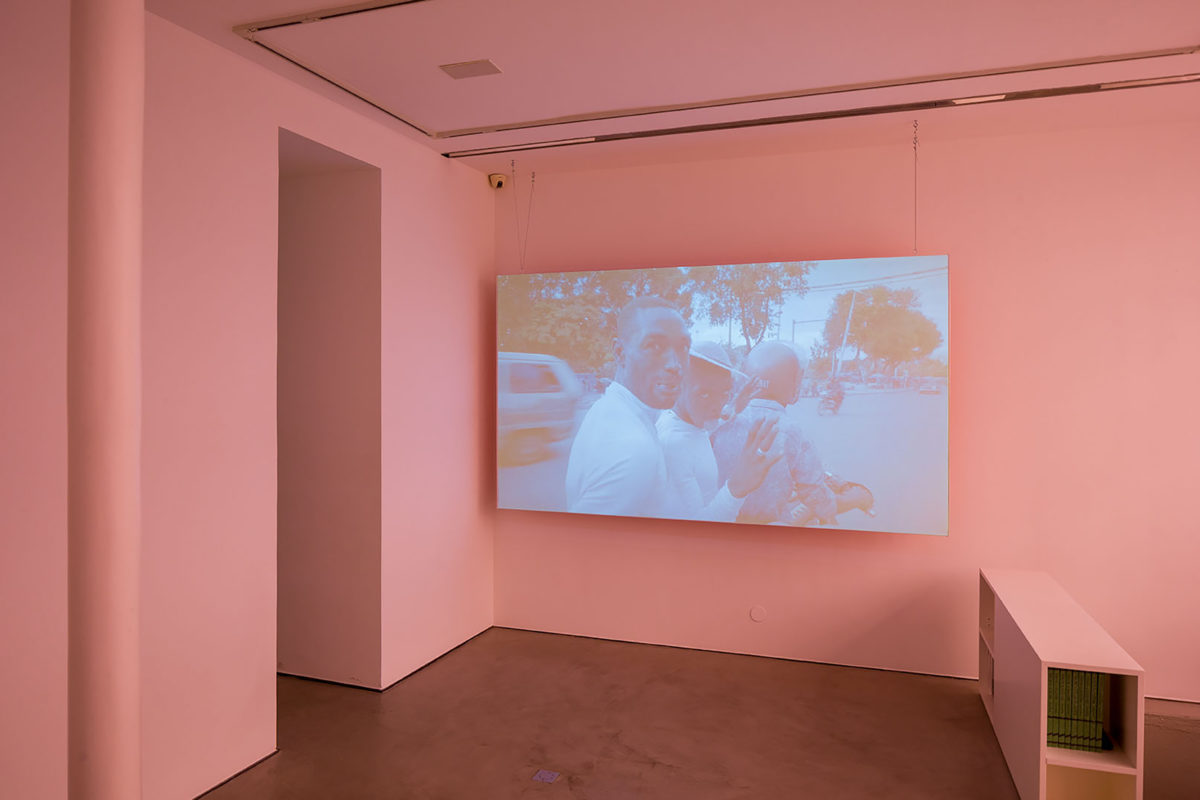
Exhibition view © Tadzio
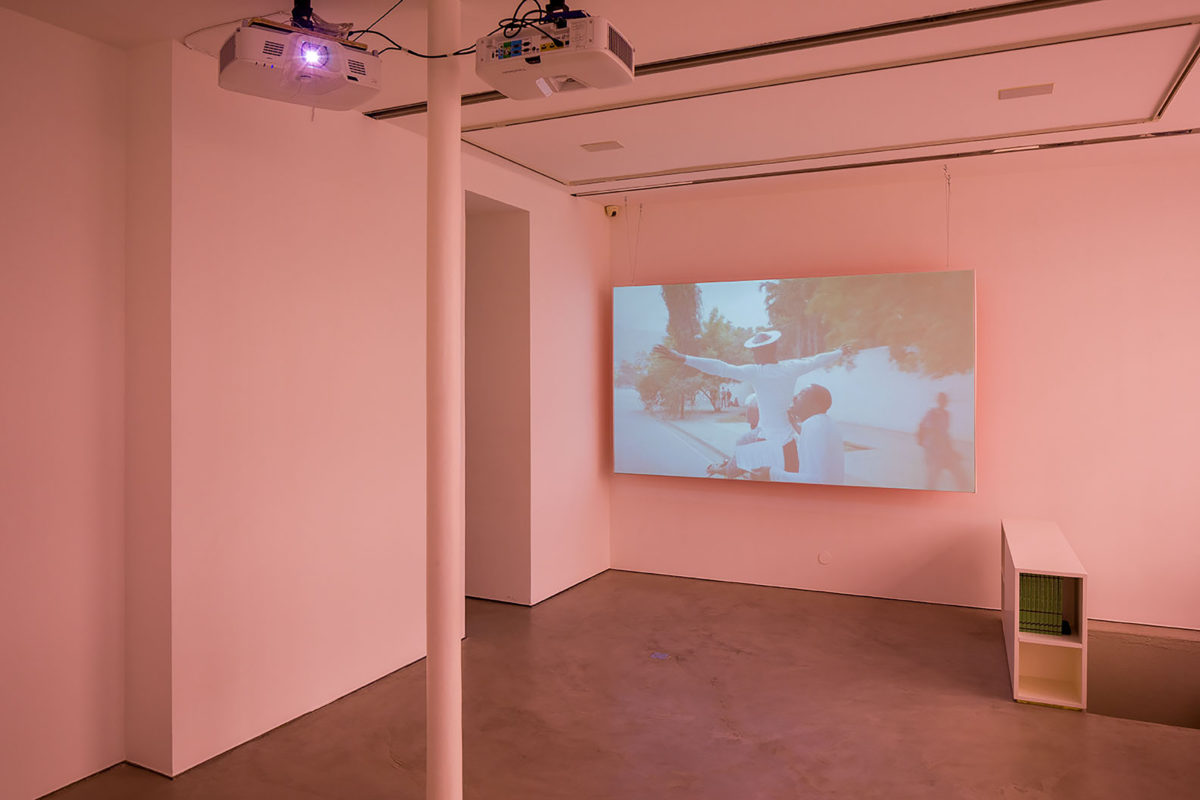
Exhibition view © Tadzio
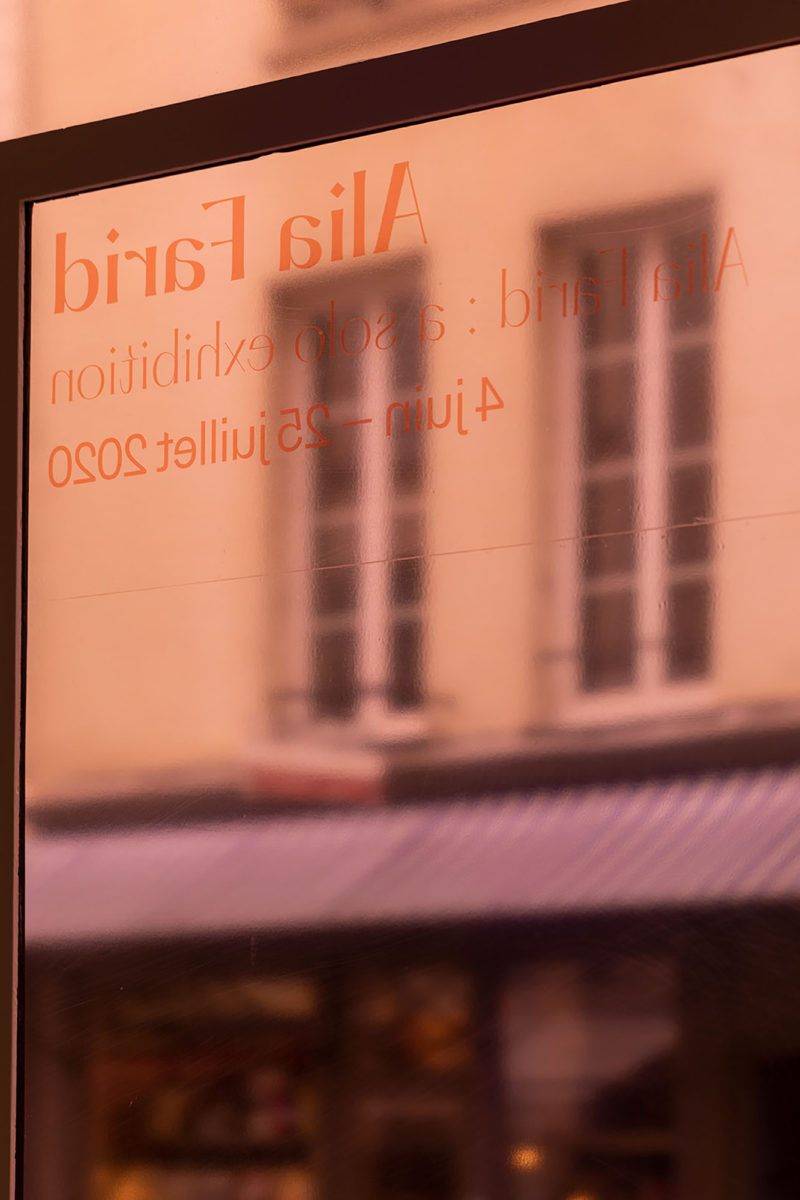
Exhibition view © Tadzio
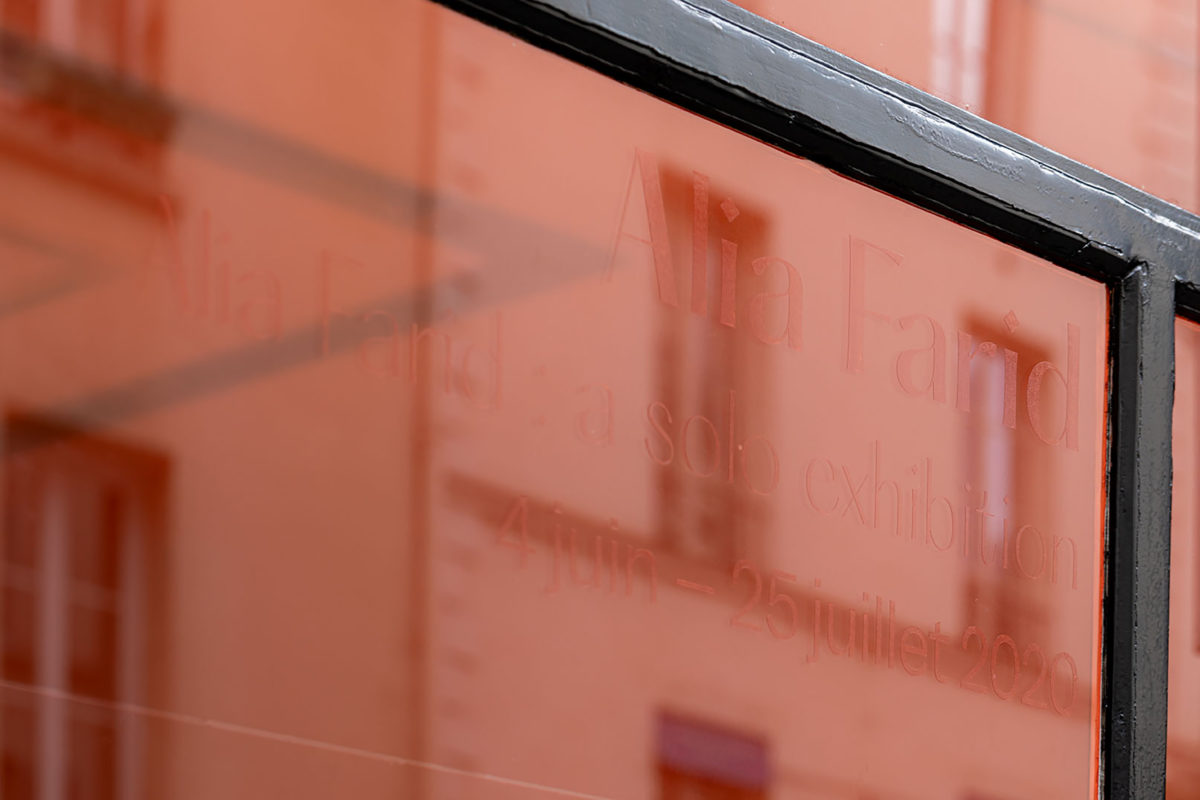
Exhibition view © Tadzio
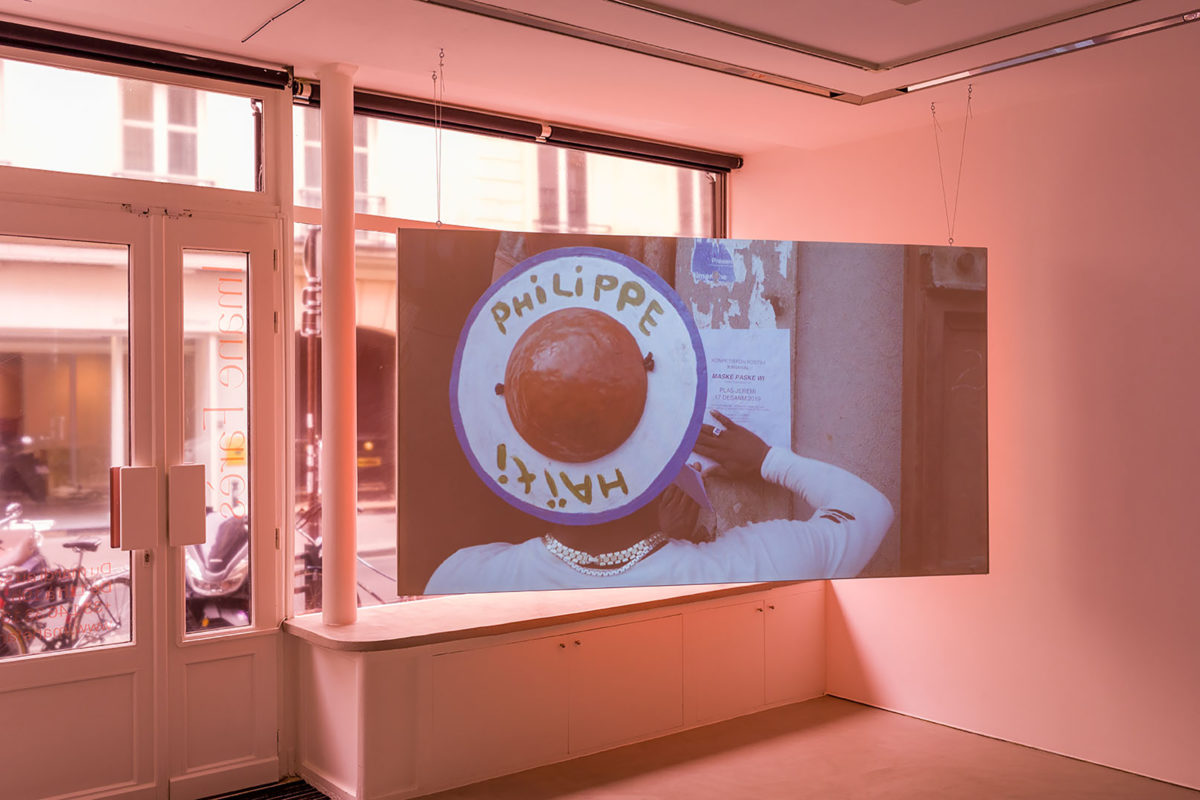
Exhibition view © Tadzio
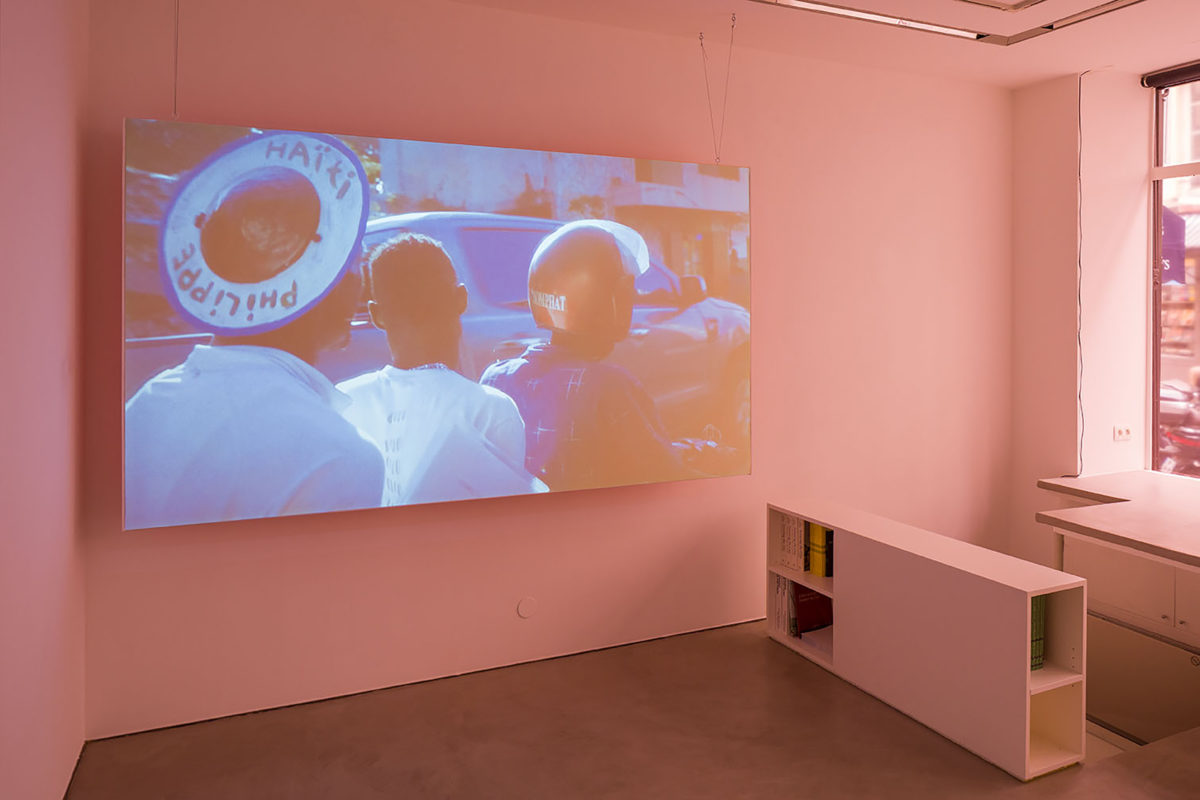
Exhibition view © Tadzio

Exhibition view © Tadzio
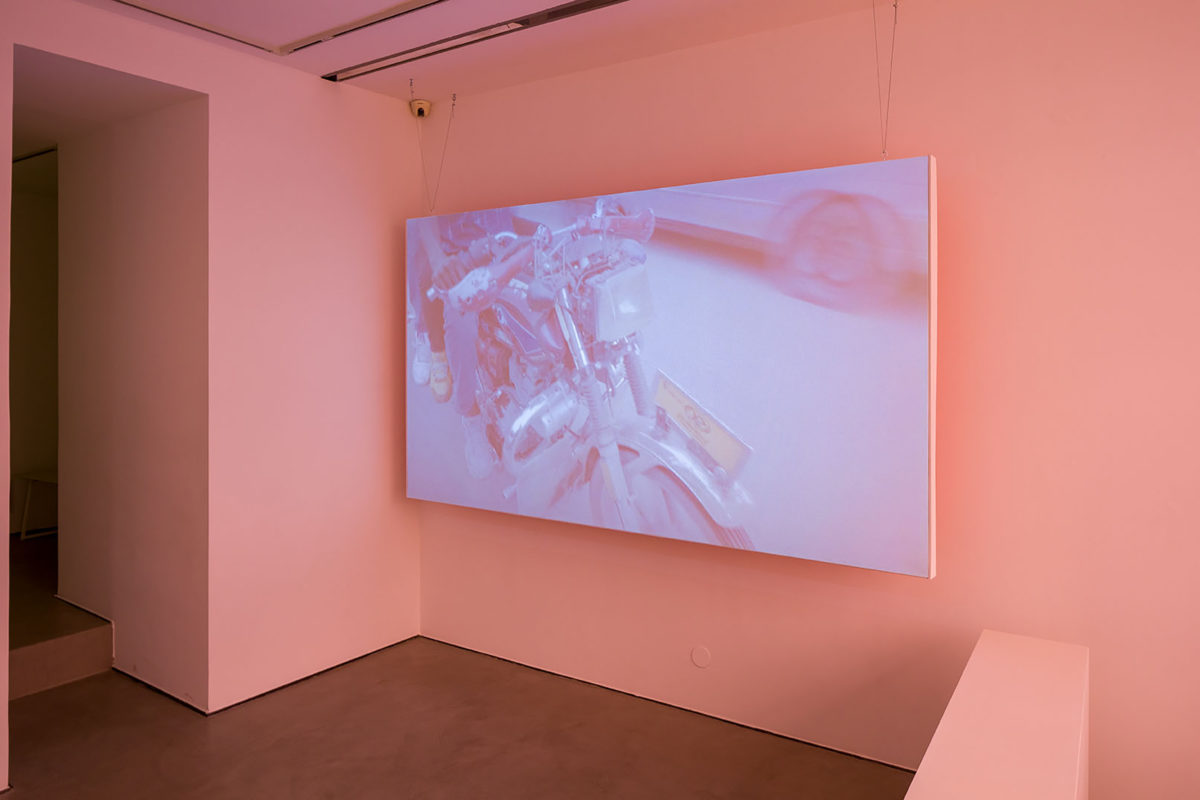
Exhibition view © Tadzio
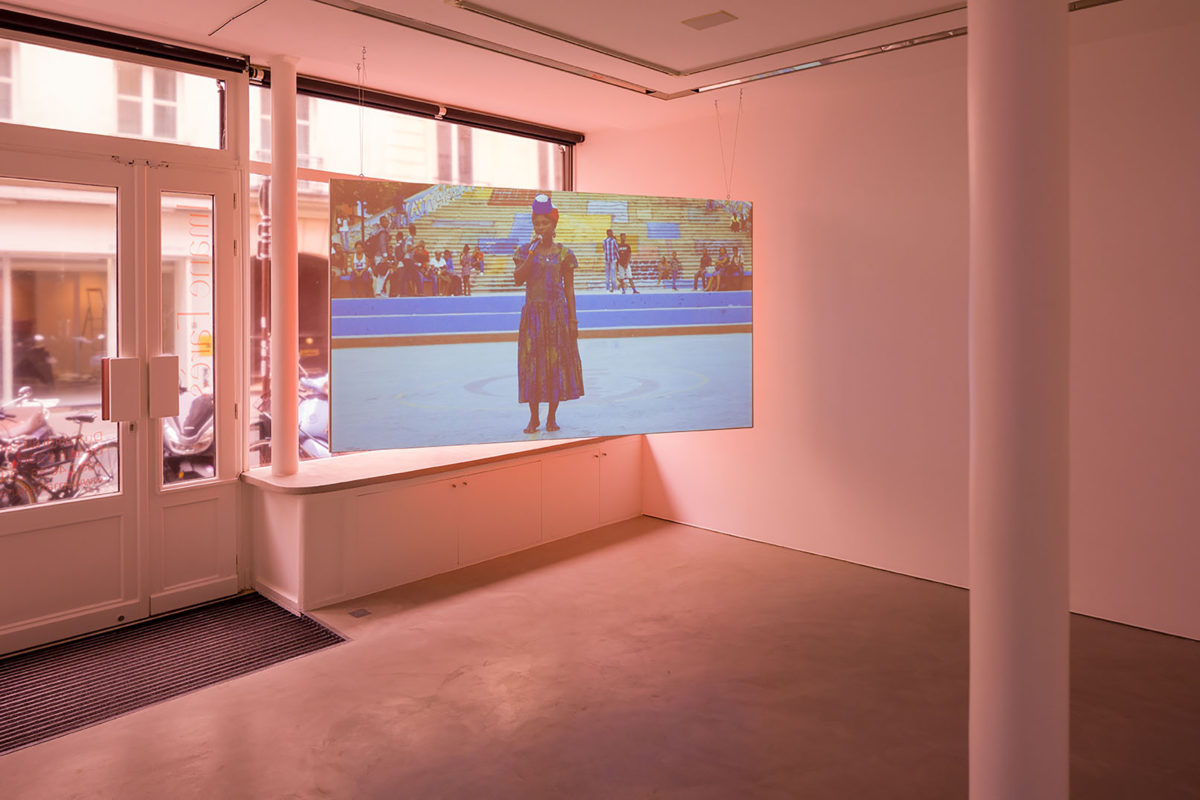
Exhibition view © Tadzio
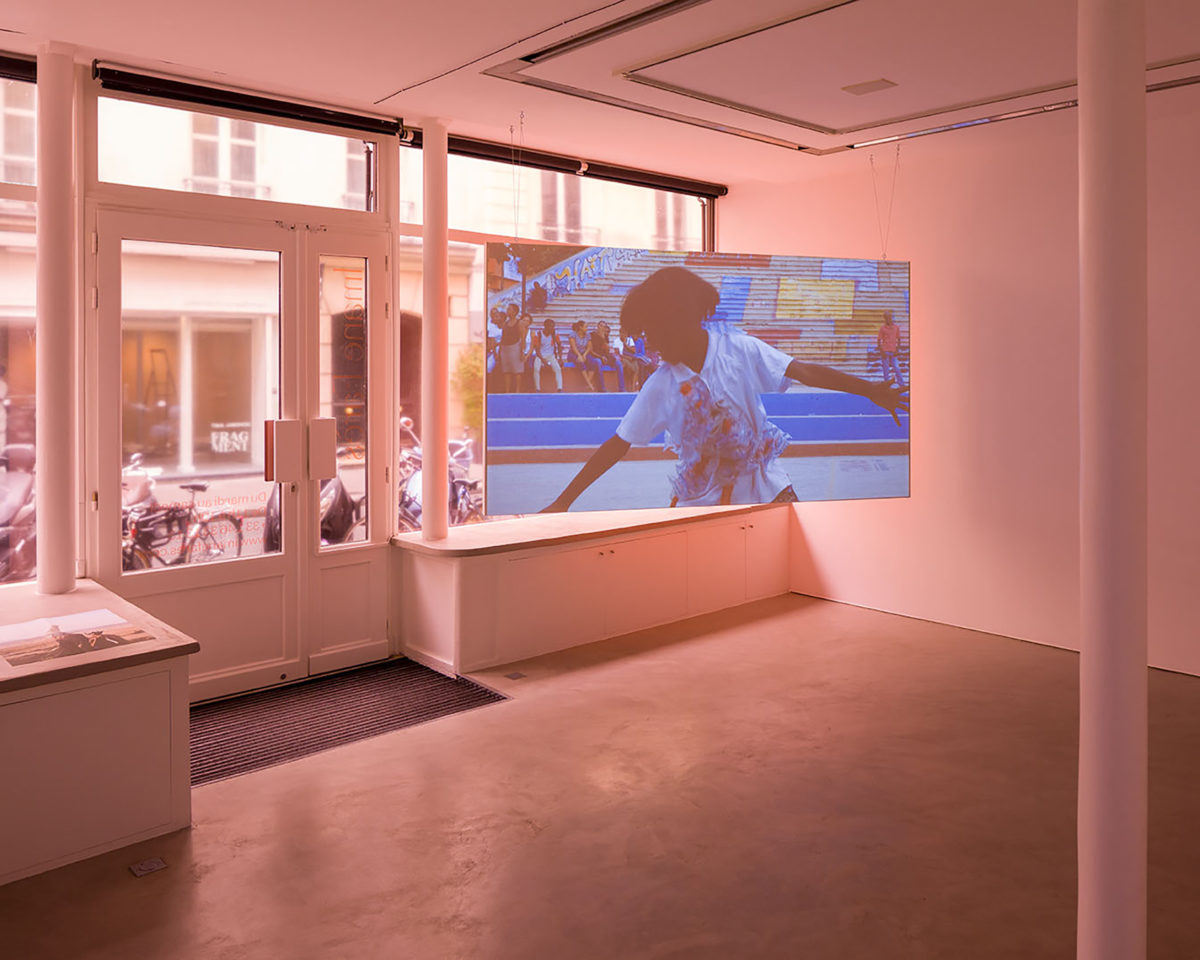
Exhibition view © Tadzio
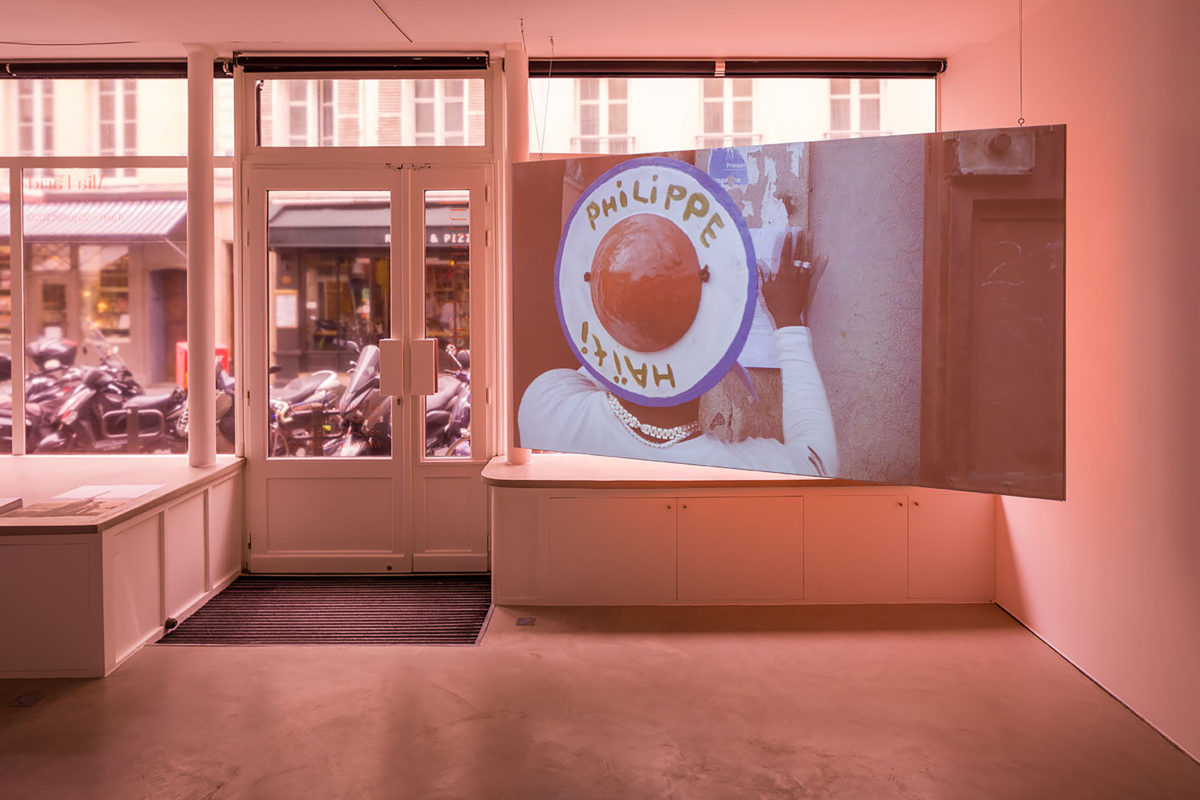
Exhibition view © Tadzio
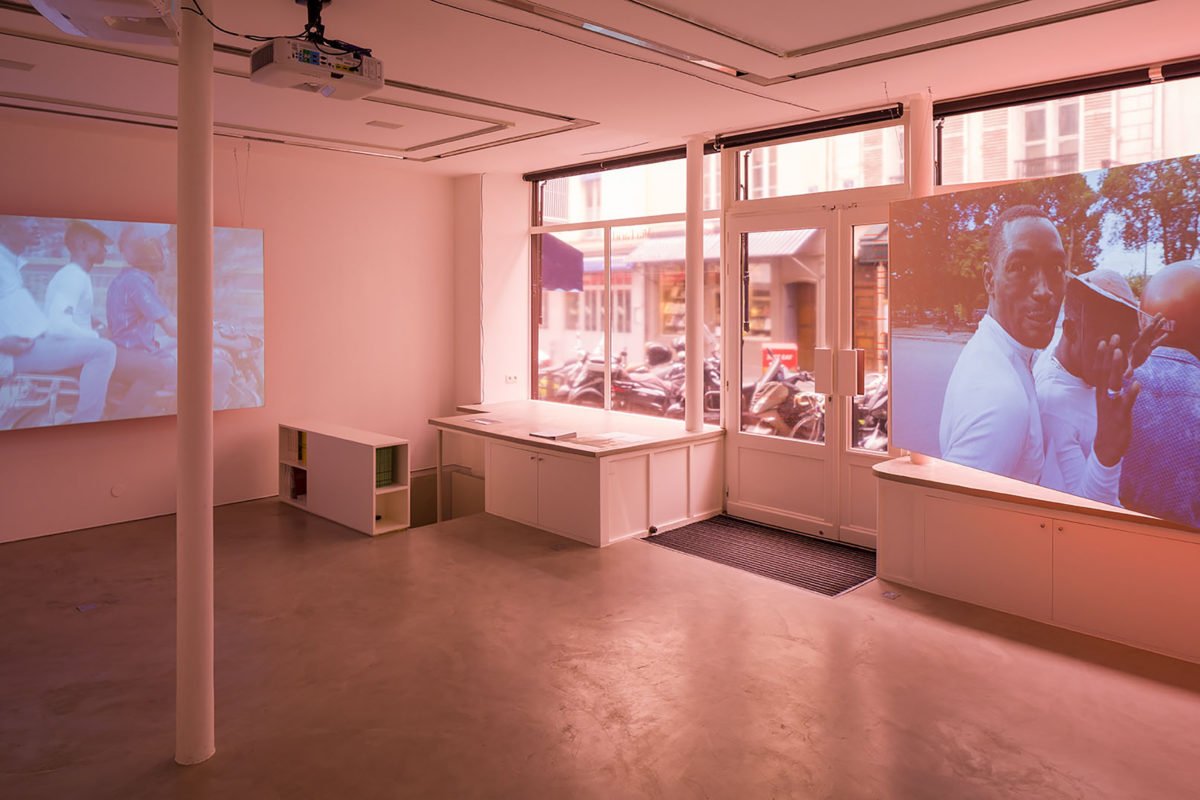
Exhibition view © Tadzio

Exhibition view © Tadzio
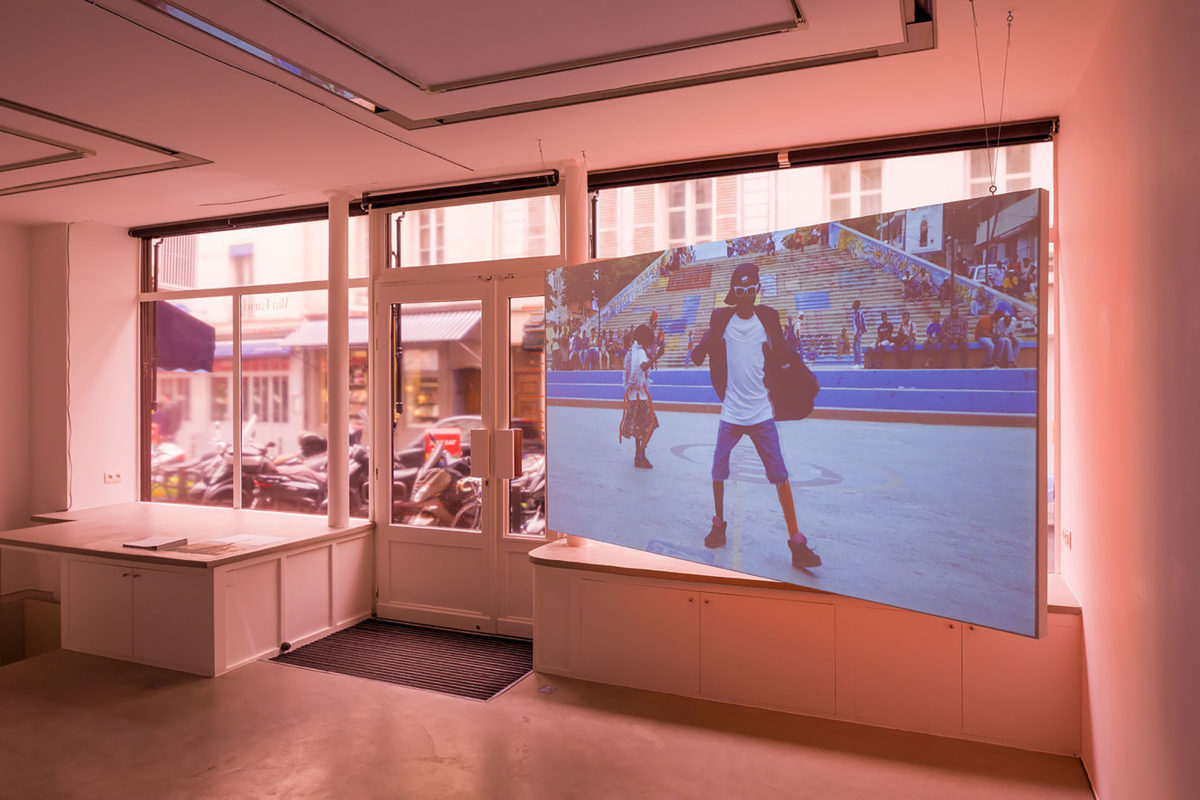
Exhibition view © Tadzio
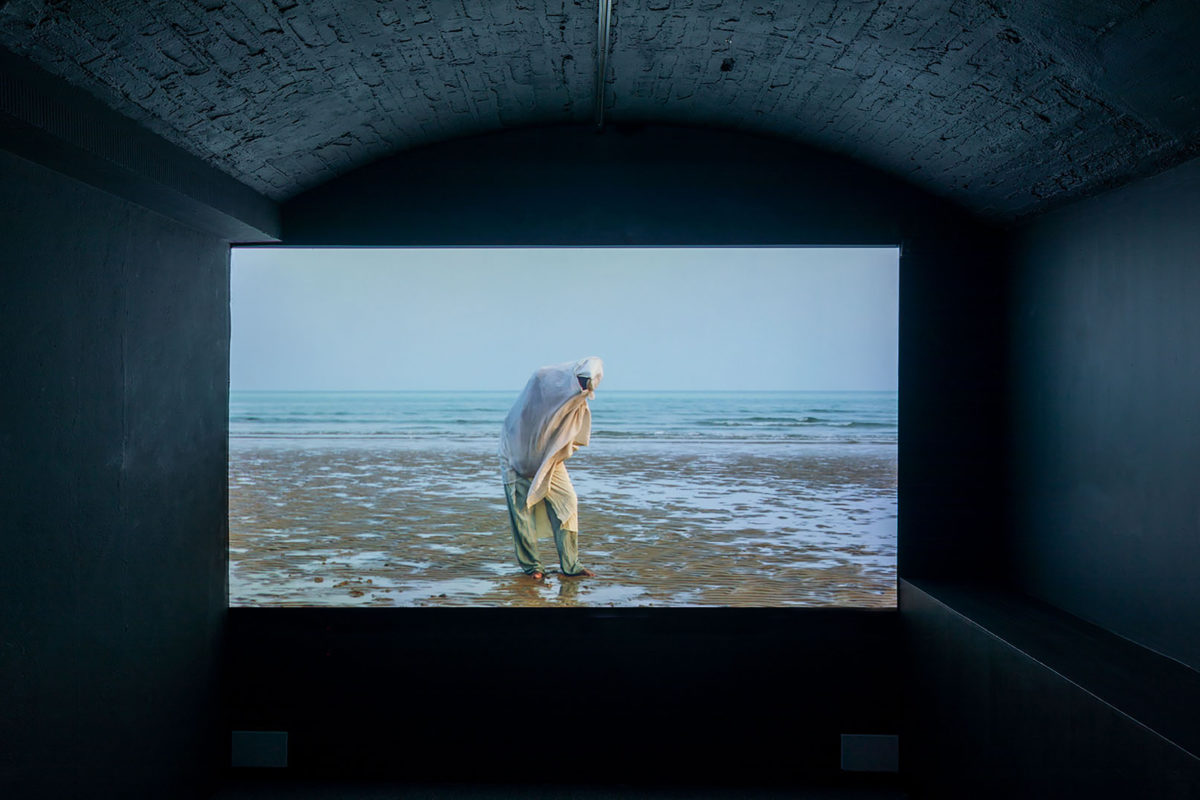
Exhibition view © Tadzio

Exhibition view © Tadzio
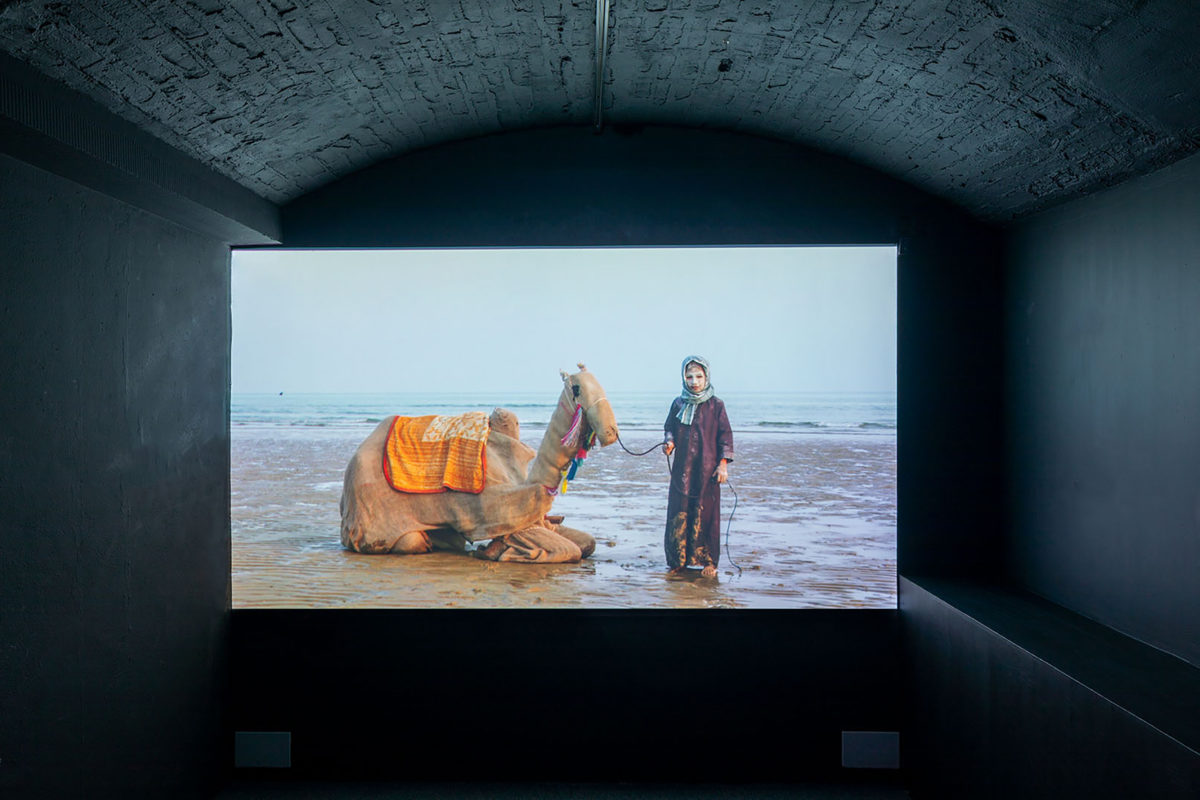
Exhibition view © Tadzio
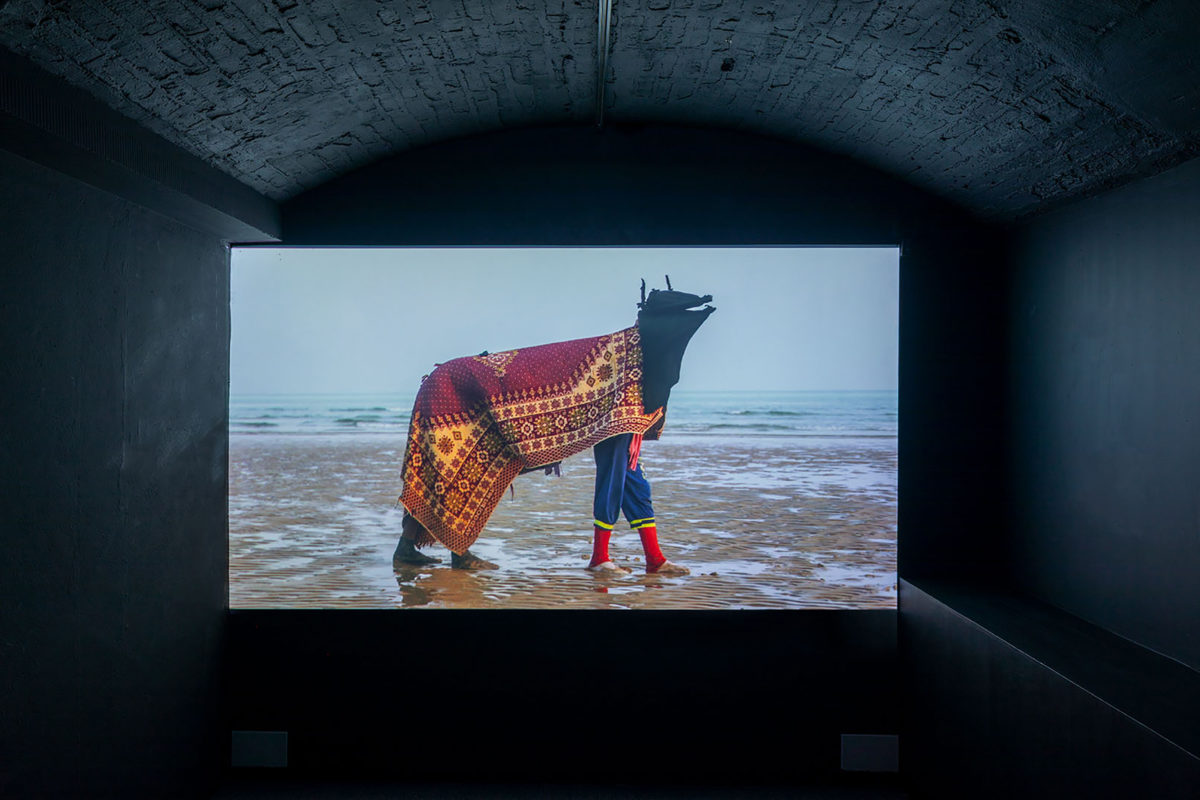
Exhibition view © Tadzio
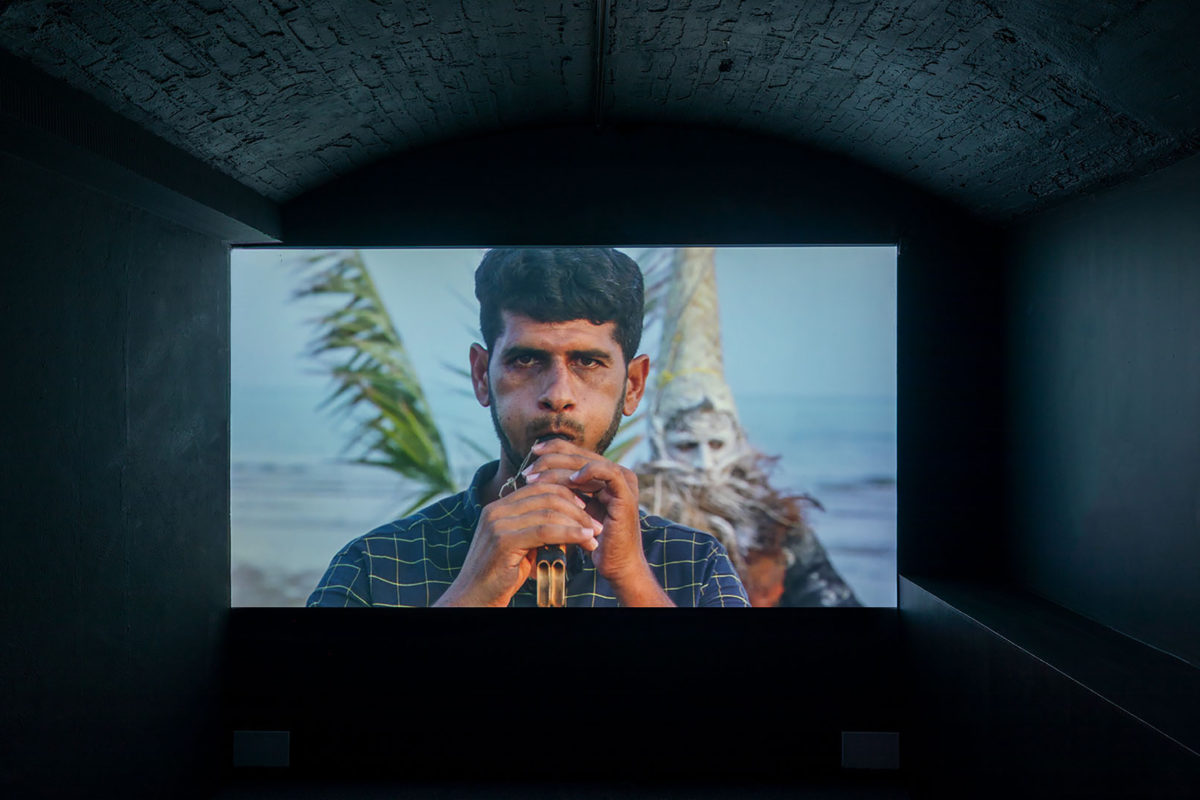
Exhibition view © Tadzio
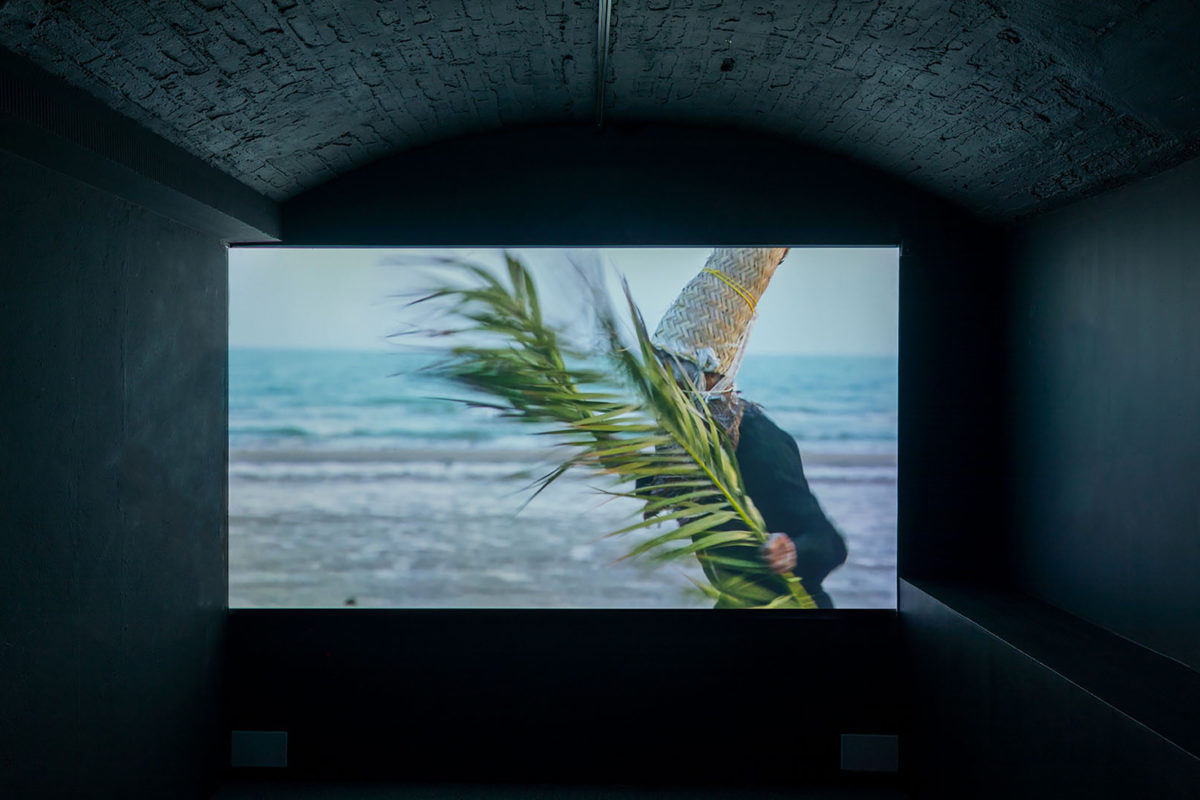
Exhibition view © Tadzio
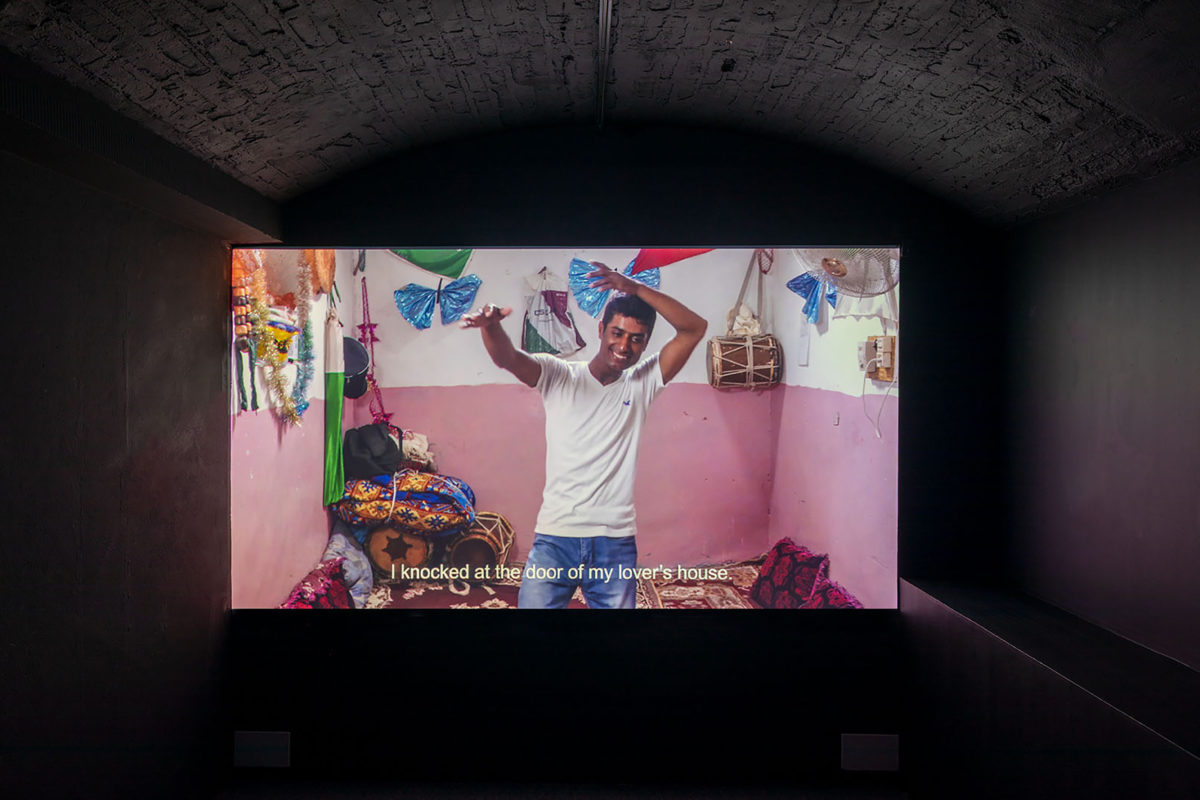
Exhibition view © Tadzio
Imane Farès is proud to present Alia Farid’s second exhibition at the gallery, originally curated by Rosa de Graaf for Witte de With Center for Contemporary Art. The exhibition presents a newly commissioned film installation, along with her earlier film At the Time of the Ebb, 2019. The newer work is shot in Haiti, and centers on the after-effects of the country’s historic revolution. Her earlier film was also shot on an island, in Qeshm, Iran; it is a melancholic meandering through local rituals performed in reverence of nature on summer solstice. In both films, Farid delves into how group rituals, social ruptures, and individual acts of resistance may admit, escape, alter, or reject definition.
This exhibition was held at Witte de With between 19 January and 19 April 2020. It was curated by Rosa de Graaf, associate curator, Witte de With, and co-produced in collaboration with Contemporary Art Museum St. Louis, United States, and The Power Plant Contemporary Art Gallery, Toronto, Canada.
The atmospheric work of Alia Farid explores contemporary urban life against the backdrop of postcolonialism in mostly Latin America and the Middle East where the artist lives and works. Her practice is motivated by an interest in exploring correlations between perceptions and the shaping of environments.
Since 2014, Farid has shown in a string of the most prominent biennials–– the Bienal de São Paulo in 2016, the Gwangju Biennale in 2018, the Sharjah Biennial in 2019, and the Whitney Biennial 2021 (forthcoming). Recent and upcoming solo exhibitions of her work include In Lieu of What Was at Portikus (Frankfurt), Alia Farid, a solo exhibition at Witte de With Center for Contemporary Art (Rotterdam), The Power Plant Contemporary Art Gallery (Toronto), and the Contemporary Art Museum St. Louis (St. Louis). Lately, she’s drawn on her background––she was brought up between markedly distinct but equally liminal societies, Kuwait and Puerto Rico–– while also privileging conceptual rigor and ambition over personal biography.
Claire Tancons, co-curator of the Sharjah Biennial 14, said of Farid: “At a time of revival of identity politics, she knows not to flaunt her dual Gulfic and Caribbean background, but rather to put both to task to sharpen a distinctly individual authorial mark.”
Alia Farid Abdal has a Bachelor of Fine Arts from La Escuela de Artes Plásticas de Puerto Rico (San Juan), a Master of Science in Visual Studies from the Visual Arts Program at MIT (Cambridge, MA), and a Master of Arts in Museum Studies and Critical Theory from the Programa d’Estudis Independents at MACBA (Barcelona).
At the Time of the Ebb, 2019, saw the artist travel one-hundred nautical kilometres from the easternmost tip of the Arabian Peninsula to the Iranian island of Qeshm. Here, she filmed the annual celebration of Nowruz Sayadeen (‘Fisherman’s New Year’). Such is the stage for Farid’s film essay, a melancholic meandering through the surviving festival traditions of an island seemingly cast out of time or, rather, living according to a rhythm very much of its own, attuned to ancient seasonal cycles. The work foregrounds a number of local residents, whose performances draw attention to their customs, ancient traditions, material surroundings and natural environment–from a brightly decorated domestic interior to an expansive sea view overlooking the Arabian Gulf.
The artist would like to acknowledge the following performers and collaborators: Yahye Irani, Hassan Chabok, Abdulrahman Poozan (Shushi); Mohammed Poozan, Mohammed Karoi, Ali Poozan, Ali Hasmi (camels); Shoja Chabok, Mohammed Tolandi, Shoja Mahmood Shadman, Ahmed Shadman Roob’e (horses); Salim Daryai (lion); Abdurahman Irani (Siyah Poosh); Mohammed Tamakhrah, Ahmed Shadman (white bird); Mohammed Ali Chabok, Akbar Deghani (pastor); Abdulla Irani, Huma Irani (pastor’s son); Baba Gholam (music); Farzad Draye (solo dance).
Film credits: Director, Alia Farid; Director of Photography, Reza Abyat; Producer, Mahmoud Sani; Editors, Alia Farid and Cristian Manzutto; Color grading, Francois Nobecourt and Cristian Manzutto; Sound and Edit Mix, Cristian Manzutto; Post production studio, estudio de producción.
For years, Farid has sought to investigate the impact of colonialism and modernist projects on different cultures. She has done so working between art, architecture, and anthropology. Her work is, in principle, socially networked. Beyond having as an end, the creation of a finite image alone, her aim is to build a sense of trust amongst those she collaborates with. And, above all, to help knit a social fabric by identifying and fostering creative affinities in the communities she comes to know or create through her artmaking.
Maske Paske Wi, 2020, saw Farid travel to one of her two regions of origin, the Caribbean. Specifically, a number of neighborhoods within Haiti’s capital, Port-au-Prince. The work is developed after Farid’s time spent on the island this winter, during which time protests against the country’s current administration intensified considerably in the face of rising inflation, high rates of unemployment, currency devaluation, and violence. As one of a number of activities, Farid worked closely with local residents on the realization of an informal structure that could both generate the possibility of income, while seeking to carve out space and time for conviviality. What resulted was a dance and costume contest titled, in Haitian Creole, Maske Paske Wi (‘Perform because why not’).
The film installation foregrounds a number of local residents, whose performances draw attention to their customs, traditions, material surroundings, and urban environment. Their speech alternates between French and Haitian Creole. And, rather than focusing on linguistic meaning, Farid’s interpretation draws from contextual cues: From the informal modes of production, distribution, and convening, to the cultural forms originated by Haitians within structures of feeling, producing, communicating and remembering. The latter is showcased in the performances of the three prize winners of Maske Paske Wi, who each manifest a confluence of characters, and of the past and present, typical of Haitian Kanaval (‘Carnival’).
Each does so by way of a different approach, including the lyrical repurposing of discarded materials in the creation of alternate identities; the donning of traditional attire whose colors are representative of Haitian loa (the spirits of Haitian vodou); the characterization of disenchantment with civilizing processes, as signaled in part by the pairing of a suit jacket with basketball shorts; and the rendition of a piece of Haitian folkloric repertoire, Erzulie. Written at the end of the nineteenth century and poignantly recited in the present, the song appeals to Erzulie, the patron spirit of love, gratitude, and healing, questioning why hard work has yielded to financial well-being.
In the exhibition, the relationship between Farid’s two primary points of reference–the Caribbean and the Middle East–is further addressed through a shared infrastructure for the two video works. This modality of coexistence creates an inconspicuous mise-en-scène. Sundown hues are cast into the space through window filters and colored projection screens. This effect, which seemingly softens the exhibition space, alludes to the works’ unraveling of narrative at the same time; what could be considered dusk or dawn. It is within this unified environment, that a confluence of sound and image occurs. And, while each channel may be regarded individually, as one moves through space a multitude of echoes and overlaps unfold. On the one hand, between the urban settings and natural environments of Port-au-Prince and Qeshm respectively, as much as, on the other, between scenes of convening, music-making, performance, and ritual.
The artist would like to acknowledge the following performers and collaborators: Noel Edgard (Papoche) and Louis Kervens (Bakari), Farid’s two main collaborators in organising Maske Paske Wi; Jacky Lafalez, Lundi Stanley, Prince Peter Surin, PBTBA, Engel Leonardo, Tony Cruz, Shelove, Gwynn Johnson, Laura Heyman, and Cluade Adolphe.
Film credits: Director, Alia Farid; Director of Photography, Cristian Manzutto; Image and Sound: Alia Farid and Cristian Manzutto; Color grading and Sound Edit: estudio de producción; Produced by Alia Farid and Cristian Manzutto. Maske Paske Witook place concurrently with the 6th Ghetto Biennale, Haiti.